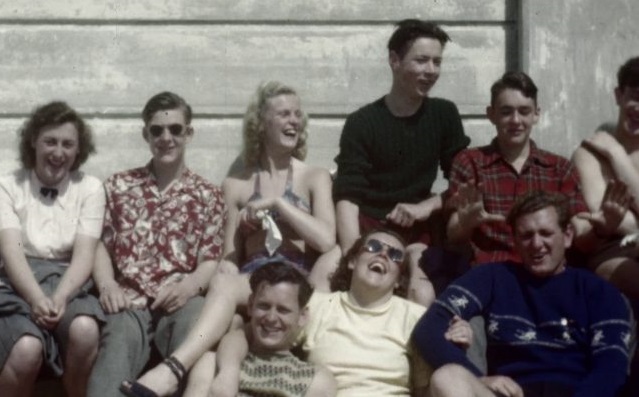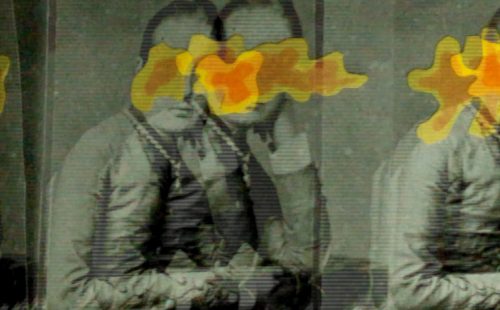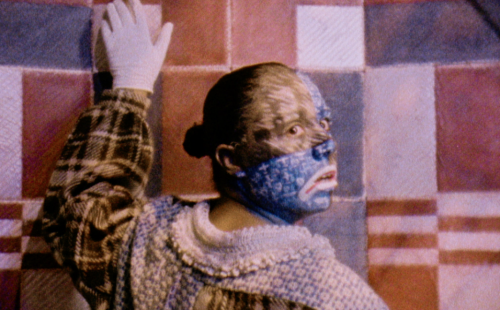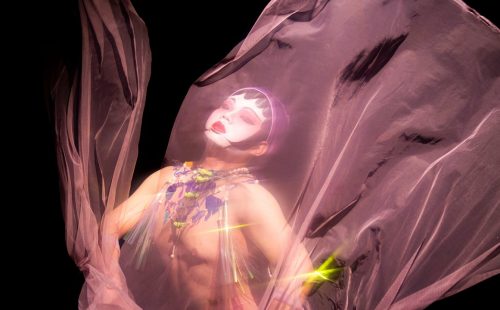
An interview with Choi Sai Ho following his residency in Brighton in August 2016, and the making of his work Brighton is Our Playground, commissioned by videoclub and Royal Pavilion & Museums, for the exhibition Experimental Motion. Brighton is Our Playground was created using found footage from Screen Archive South East.
To start off with, can you tell us a little about the work you make, and what inspires you to make it?
In regard to found footage, it really depends on what found footage you’ve got. The structure I was editing, in fact, involved a very primitive “story” or “narrative” structure – a man goes to the car, then car journey, Brighton, introducing people at the beach, and so on. I started thinking about what musical style would fit the work while watching the footage.
Your work often involves a combination of visuals and sound – is either more important to you? How do you decide what kind of visuals go with what sounds?
In making this work, I treated it as making a film. Both visuals and sound are important to me. While I was watching the found footage (most of it is silent film), I had some ideas about music genres such as Triphop, Downtempo, Ambient, etc. within Electronica style, and that it should not be too complicated, and should not have too many instruments for the soundtrack.
After building a very rough piece of music, I edited the footage following the beats and rhythms of the music piece. The music always decides the tempo and rhythm of the film. So it makes easier for editing. The good thing about being a composer and filmmaker is I can make changes immediately during the creative process if the footage does not match with the music or vice versa. I can change either one of these in order to fit with the other. When I watched the old footage, I found that the beach footage was so beautiful, basically this old footage was so beautiful, and they were real and existed – the people at the beach [Father Neptune Ceremony on Brighton Beach, 1951, Roger Dunford], the young couple, the cameraman and the director inside the film [Local News in Brighton & Hove, 1951]… I knew I had to include this footage to show these beautiful images. And I needed the beautiful melodies to match with this footage so I composed it and put it to this film artwork.
In August, you took part in a residency in Brighton with videoclub, and worked with Screen Archive South East to produce a new work for Brighton Museum and Art Gallery, Brighton is Our Playground. Can you tell us a little about the film, and how you decided on which archive films to include in your final film?
I saw that so much footage was from car driver seats, train windows, trams or other transportation in UK. I’ve always liked the point-of-view shot from driver’s seats. I wanted the audience to also experience what it was like a few decades ago journeying in a car or train. A bit like music structure, the beginning and the ending is the same or similar, so you would see the POV shots were used at the beginning and the ending of my film artwork here. Furthermore, I tried to include different eras of Brighton and UK while deciding upon the archive films.
What was it like working with the Screen Archive?
They were so helpful and they manage the archive and access to footage very well. Normally the general public may not be interested in watching these films unless you are film scholars, film lovers, researchers or artists, etc. It is a very good way for the public to watch the footage through my work. I guess it is also a kind of cultural preservation, preserving the old films and cultural activity as well. I hope my work can bring this old footage to life again, showing the beautiful things that exist in history.
The soundtrack to Brighton is Our Playground is quite fast-paced, quite in contrast to what people think of a soundtrack to archival films, why did you decide to compose this type of music?
To me, making music is similar to editing films. Practically, electronic music is more convenient for me to work on. The spectrum of electronic music is so wide. I hope people have a different perception about electronic music after watching my work. It can be fast-paced and soft downtempo too. For the beginning of my work, you would hear my own field recordings of Brighton beach. The contemporary electronic music mixing or colliding with old film footages may be a good mixture here. Making artworks always involves experiments. Creators are always trying different combinations to see if it works or not.
Choi Sai-Ho《Brighton Is Our Playground》 from Sai Ho Choi on Vimeo.





